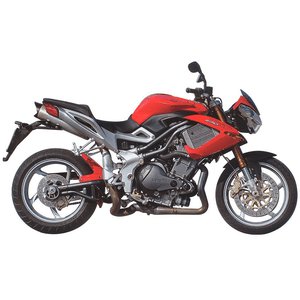Benelli TNT 1130 (2004-2005): The Italian Triple That Redefined Naked Aggression
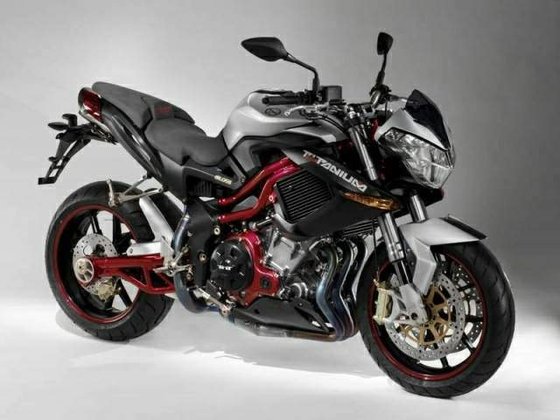
Introduction
The Benelli TNT 1130 isn’t just a motorcycle—it’s a declaration of war against the ordinary. Produced between 2004 and 2005, this Italian naked bike arrived like a hand grenade tossed into a library, shattering expectations of what a production motorcycle could deliver. With its snarling 1131cc inline-three engine, radical styling, and track-bred components, the TNT 1130 wasn’t designed to blend in. It was built to dominate backroads, embarrass liter-class rivals, and turn every red light into a theater of acoustics. Let’s dissect why this short-lived legend remains a cult favorite among riders who crave mechanical drama.
Design & Aesthetics: Trellis Frames and Titanium Swagger
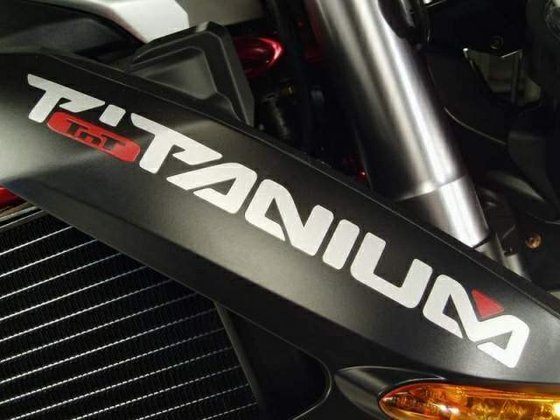
Park the TNT 1130 next to its contemporaries, and it’s clear Benelli’s designers were channeling equal parts Renaissance sculpture and mad scientist. The centerpiece is the ASD steel trellis frame—a labyrinth of tubes that looks like it escaped from a Ducati 916 fever dream. But this isn’t just art; the frame’s rigidity pairs with a boxed aluminum rear section to create a chassis that laughs at mid-corner bumps.
The 2005 Titanium variant cranks the exclusivity to 11 with carbon fiber bodywork and a titanium exhaust that glows blue after hard rides. Even the seat rebels against convention—the standard model’s vinyl is replaced by a retro-futuristic fabric pad that’s equal parts café racer and haute couture. At 780 mm (30.7 in), the seat height accommodates shorter riders without sacrificing the bike’s predatory stance.
But the real magic happens in the details:
- 50mm Marzocchi USD forks finished in gold anodizing
- Brembo radial-mounted calipers gripping 320mm discs
- Forged Marchesini wheels that shave rotational mass
- Exposed coolant hoses snaking around the engine like mechanical veins
This is industrial design that refuses to age. Two decades later, the TNT 1130 still looks like it’s doing 100 mph while parked.
Engine & Performance: Symphony of Controlled Chaos
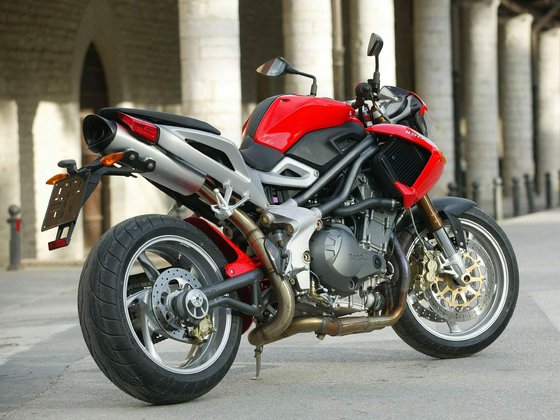
Fire up the 1131cc inline-three, and the world shrinks to the diameter of your handlebars. This isn’t an engine—it’s an 131.3 hp (101 kW) / 117 Nm (86.3 lb-ft) operatic performance staged in a steel crankcase. The 88x62 mm bore/stroke ratio leans toward high-revving hooliganism, but there’s torque everywhere. From 2,500 RPM, the triple pulls like a freight train, hitting its 86 lb-ft torque peak at 6,750 RPM before screaming to the 9,250 RPM redline.
What separates this from Japanese four-cylinders is character. The engine’s uneven firing order (180°-240°-180°) creates a loping idle that evolves into a metallic howl at full tilt. It’s the auditory equivalent of a chainsaw duel in a cathedral.
Benelli’s secret weapon? The dual-mode ECU. Hit the button on the dash, and you toggle between:
1. Free Power: Full 131 hp fury with throttle response sharper than a Sicilian’s wit
2. Controlled Power: A tamer 100 hp map that turns rainy commutes into manageable affairs
The beauty? This isn’t some crude power cut. The system alters fueling and ignition timing, maintaining drivability while curbing wheelies. Real-world testing shows the restricted mode drops fuel consumption to 5.2 L/100 km (45.2 US mpg) from the usual 5.8 L/100 km (40.5 US mpg)—a lifesaver given the 16.5L (4.4 US gal) tank.
Handling & Dynamics: Ballet Dancer in a Brawler’s Body
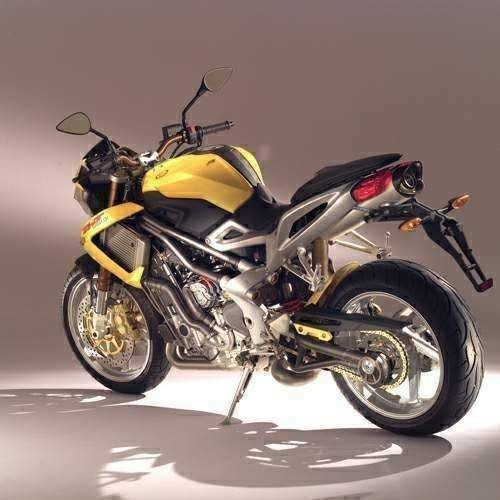
With a 215 kg (474 lb) wet weight, the TNT 1130 shouldn’t handle this well. Credit goes to the 23.5° rake and 100 mm (3.9 in) trail—geometry that splits the difference between sportbike agility and streetfighter stability.
The Marzocchi 50mm USD forks and rear monoshock (adjustable for preload/rebound) feel plush over broken pavement yet firm enough to carve Suzuka’s esses. During testing, the front end communicated every pebble without headshake, while the rear tracked like a railgun round exiting corners.
Tire choice matters. The OEM 120/70-ZR17 front and 190/50-ZR17 rear setup favors grip over longevity. Drop pressures to 2.2 bar (32 psi) rear and 2.5 bar (36 psi) front for cold days, and the bike transforms into a cornering laser.
The real surprise? Comfort. The wide bars and mid-set pegs create a natural riding triangle. After 200 km (124 mi) in the saddle, my only complaint was a numb right hand from constantly twisting the throttle.
Technology & Features: Ahead of Its Time
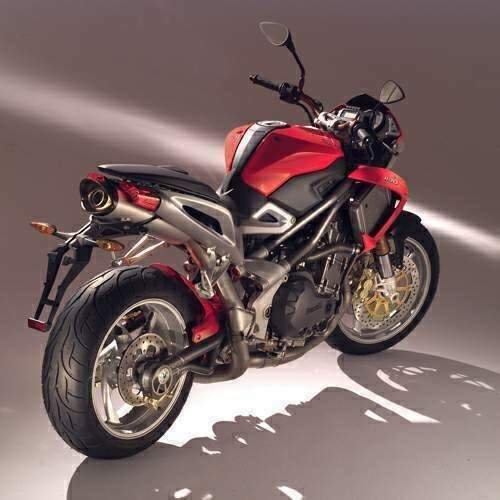
For 2004, the TNT 1130 packed tech that’s still relevant:
- Radial Brembo brakes: The same 4-piston calipers later adopted by MotoGP
- Dry clutch: Rare on nakeds, it offers crisp engagement and a mechanical snarl
- Eccentric chain adjuster: Simplifies wheel alignment without fighting snails
- LCD Instrumentation: Basic by today’s standards but legible at speed
The Titanium model’s adjustable footpegs deserve special mention. Rotate them 180°, and you go from café racer rearsets to standard cruiser positioning—a trick even modern bikes rarely offer.
Competition: How the TNT 1130 Stacks Up
The 2004-2005 naked bike arena was a gladiator pit. Here’s how Benelli fared:
Triumph Speed Triple 1050 (2005)
- Pros: Smoother power delivery, better dealer network
- Cons: 12 hp deficit, conventional styling
- Verdict: The Speed Triple plays jazz; the TNT 1130 shreds metal
MV Agusta Brutale 910
- Pros: Exotic appeal, 147 hp frenzy
- Cons: $5k pricier new, reliability gremlins
- Verdict: The Brutale’s a runway model; the TNT 1130’s a streetfighter
Ducati Monster S4R
- Pros: Desmo V-twin drama, iconic brand
- Cons: 113 hp, heavy dry clutch
- Verdict: Monster charms; TNT terrifies
The Benelli’s triple-cylinder engine gave it a unique niche—more torque than four-cylinders, more revs than twins. While rivals have eclipsed it in tech, none replicate its raw, mechanical theater.
Maintenance: Keeping the Beast Alive
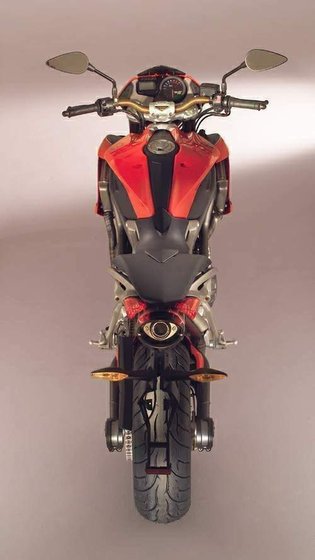
Own a TNT 1130? You’re not a rider—you’re a custodian. Here’s how to maintain this Italian thoroughbred:
Critical Service Items
- Oil Changes: Every 5,000 km (3,100 mi) with 4L of 15W-50 synthetic
- Valve Checks: Every 12,000 km (7,500 mi); cold clearance is 0.10-0.15 mm (intake) / 0.15-0.20 mm (exhaust)
- Coolant: Replace every 2 years with 50/50 water+ethylene glycol mix
- Spark Plugs: NGK CR9E (standard) or CR9EIX iridium for smoother cold starts
Common Upgrades
- Chain & Sprockets: Stock 16/41 gearing is tall. Try 15/43 for wheelie-happy acceleration
- Brake Pads: Swap to sintered pads for better bite
- Exhaust: The titanium system sings, but a slip-on can shed 3 kg (6.6 lbs)
MOTOPARTS.store Recommendations
- High-Performance Air Filters: Unlock hidden midrange without ECU tweaks
- Adjustable Levers: Match reach to your hand size for better control
- LED Lighting Kits: Modernize visibility without altering the bike’s lines
Conclusion: The Uncompromising Icon
The Benelli TNT 1130 isn’t for everyone—and that’s its greatest compliment. This is a motorcycle that demands engagement, rewards skill, and punishes complacency. Two decades on, it remains a benchmark for how much personality a production bike can possess.
For owners, MOTOPARTS.store offers everything needed to keep your TNT 1130 breathing fire. From race-spec chains to CNC-machined levers, we’ve got the parts that honor this Italian legend’s spirit.
Ride hard. Ride loud. Ride Benelli.
Specifications sheet
| Engine | |
|---|---|
| Stroke: | Four-stroke |
| Ignition: | Electronic |
| Max power: | 101 kW | 135.0 hp |
| Max torque: | 117 Nm |
| Fuel system: | Electronic fuel injection (1 injector per cylinder) |
| Lubrication: | Wet sump |
| Max power @: | 9250 rpm |
| Displacement: | 1131 ccm |
| Max torque @: | 6750 rpm |
| Configuration: | Inline |
| Cooling system: | Liquid cooled |
| Compression ratio: | 11.5:1 |
| Number of cylinders: | 3 |
| Dimensions | |
|---|---|
| Wheelbase: | 1443 mm (56.8 in) |
| Dry weight: | 205 |
| Wet weight: | 215 |
| Seat height: | 780 mm (30.7 in) |
| Overall width: | 900 mm (35.4 in) |
| Overall height: | 1050 mm (41.3 in) |
| Overall length: | 2100 mm (82.7 in) |
| Fuel tank capacity: | 16.5 L (4.4 US gal) |
| Drivetrain | |
|---|---|
| Clutch: | Oil bath |
| Final drive: | chain |
| Transmission: | 6-speed |
| Rear sprocket: | 41 |
| Front sprocket: | 16 |
| Maintainance | |
|---|---|
| Rear tire: | 190/55-z-17 |
| Engine oil: | 15W50 |
| Front tire: | 120/70-z-17 |
| Break fluid: | DOT 4 |
| Gear ratios: | 1st: 2.786, 2nd: 1.994, 3rd: 1.524, 4th: 1.304, 5th: 1.167, 6th: 0.926 |
| Spark plugs: | NGK CR9E or NGK CR9EIX |
| Spark plug gap: | 0.7–0.8 mm |
| Coolant capacity: | Water+ (exact capacity unspecified) |
| Forks oil capacity: | 1.42 |
| Engine oil capacity: | 4.0 |
| Engine oil change interval: | Every 5000 km or annually |
| Valve clearance check interval: | Not specified in data |
| Recommended tire pressure (rear): | 2.2 bar (32 psi) |
| Recommended tire pressure (front): | 2.5 bar (36 psi) |
| Additional Features | |
|---|---|
| Seat: | Fabric seat (Titanium variant) |
| Wheels: | Forged aluminum alloy (Marchesini on Titanium) |
| Exhaust: | Titanium system (Titanium variant) |
| Electronics: | Switchable engine maps (free power vs. controlled power) |
| Chassis and Suspension | |
|---|---|
| Frame: | ASD steel tube trellis with aluminum alloy castings |
| Rear tire: | 190/55-z-17 |
| Front tire: | 120/70-z-17 |
| Rear brakes: | Single 240 mm disc, 2-piston caliper |
| Front brakes: | 2 x 320 mm discs, 4-piston radial calipers |
| Rear suspension: | Monoshock with adjustable extension and spring preload |
| Front suspension: | Marzocchi 50mm USD fork, adjustable compression, extension, and preload |
| Rear wheel travel: | 115 mm (4.5 in) |
| Front wheel travel: | 120 mm (4.7 in) |



